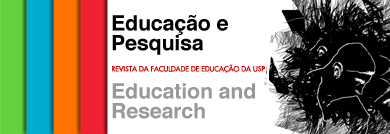Resumo em Português:
O artigo analisa o significado do índice de evasão escolar na vida de uma comunidade de pequenos produtores rurais, imigrantes vindos da região da Pomerânia, norte da Alemanha. A população do município escolhido é composta por 90% de descendentes de pomeranos, que lá chegaram no ano de 1847. Embora o Espírito Santo não receba mais alemães desde a década de 1870, essas comunidades mantiveram o uso de seu dialeto, suas festas, seus costumes culturais e maritais, a continuidade da narrativa da tradição oral camponesa, enfim, o modo de vida camponês. No contexto da imigração brasileira, nenhuma outra etnia se concentrou tanto em áreas homogêneas e compactas como esta, concorrendo para modificar a estrutura fundiária e a vida rural dos estados onde se estabeleceu. Este trabalho aborda a relação entre o uso de várias línguas (portuguesa, alemã e pomerana) e a religiosidade luterana no cotidiano do grupo, os padrões de transmissão da herança da terra e a consequente valorização destes elementos no ensino confirmatório empreendido pela igrejas Luterana e Missouri, como pontos que permitem compreender os valores sociais e educacionais mais importantes para o grupo na reprodução da sua condição campesina. São examinadas as representações do grupo acerca do papel social desempenhado pela escola, pelo professor e pelo pastor, e sua relação com os elementos mantenedores de seu ethos camponês: a obediência às regras de reciprocidade, a conformidade com os princípios de hierarquia (autoridade paterna e pastoral) e a solidariedade com parentes e vizinhos.
Resumo em Inglês:
The article deals with the meaning of school drop out in the life of a small comunity of rural workers descendants of Pomeranians - immigrants originally from the northern German. Ninety percent of the district population descend of Pomeranians that arrived in 1847. Although the state of Espírito Santo did not receive any more Germans after the 1870s, these communities have preserved their dialect, celebrations, cultural and marital habits and the narrative of peasant oral traditions. In the context of Brazilian immigration, no other ethnic group as the Pomeranians in Espírito Santo settled in such homogeneous and compact areas, contributing to modify the landowning structure and the rural life of the state where they established themselves. This work takes up the relationship between the use of several languages (Portuguese, German, and Pomeranian) and the Lutheran religiosity in the daily life of the group, the patterns of land ownership inheritance and the consequent importance of these elements in the confirmatory teaching carried out by the Lutheran and Missouri churches. These aspects result in an understanding of the social and educational values that are more important to the group in the reproduction of their peasant condition. The group representations about the role played by the school, the teacher and the minister are examined, as well as the relationship between such representations and the elements that help preserving the group’s peasant ethos: obedience to the rules of reciprocity, conformity to the principles of hierarchy (paternal and clerical authority), and solidarity to relatives and neighbors.
